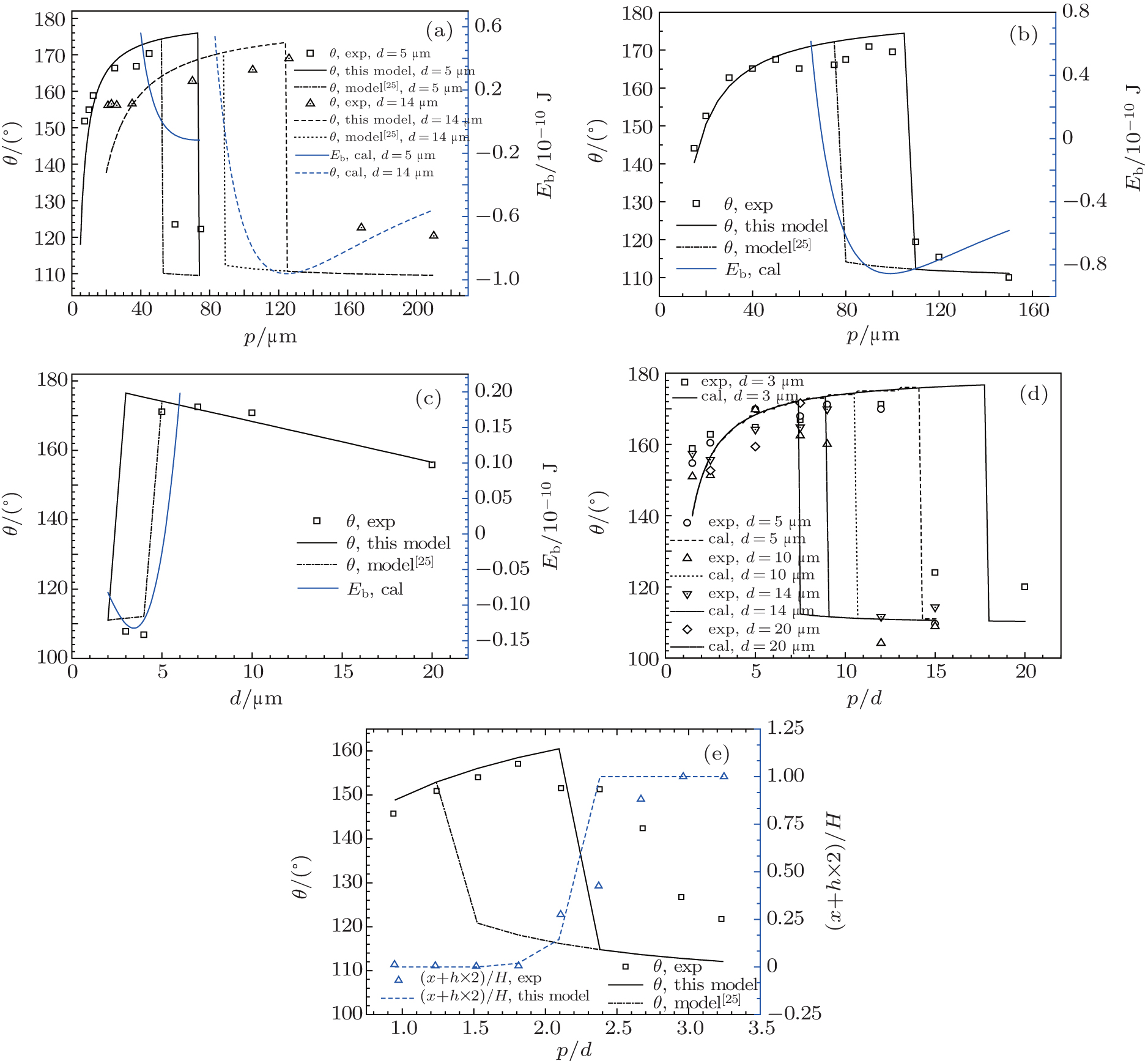Theoretical analysis of droplet transition from Cassie to Wenzel state

Theoretical analysis of droplet transition from Cassie to Wenzel state |
| Changes of contact angle and IFE barrier E b of sessile droplets before and after C–W transition on different textured surfaces. (a) Experimental data originate from literature,[ 13 ] H = 10 μm when d = 5 μm, H = 30 μm when d = 14 μm; V = 5 μL, θ I = 109°, θ A = 109°. (b)–(d) Experimental data originate from literature,[ 22 ] V = 3 μL, θ I = 110°, θ A = 116°, (b) d = 10 μm, H = 40 μm; (c) p = 50 μm, H = 20 μm; (d) H = 2 × d. (e) Experimental data originate from literature,[ 21 ] d = 105 μm, H = 150 μm, V = 4.3 μL, θ I = 107.5°, and θ A = 107.5°. Here the IFE barrier of the C–W transition is defined as the difference between the IFE of a composite droplet when its bottom TPCL moves to x = H and the IFE of Cassie state droplet. |
 |